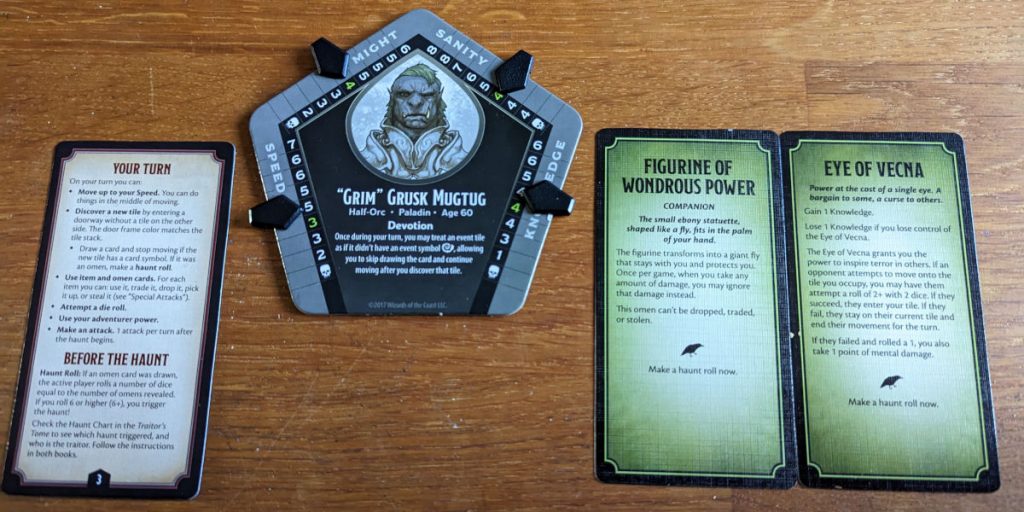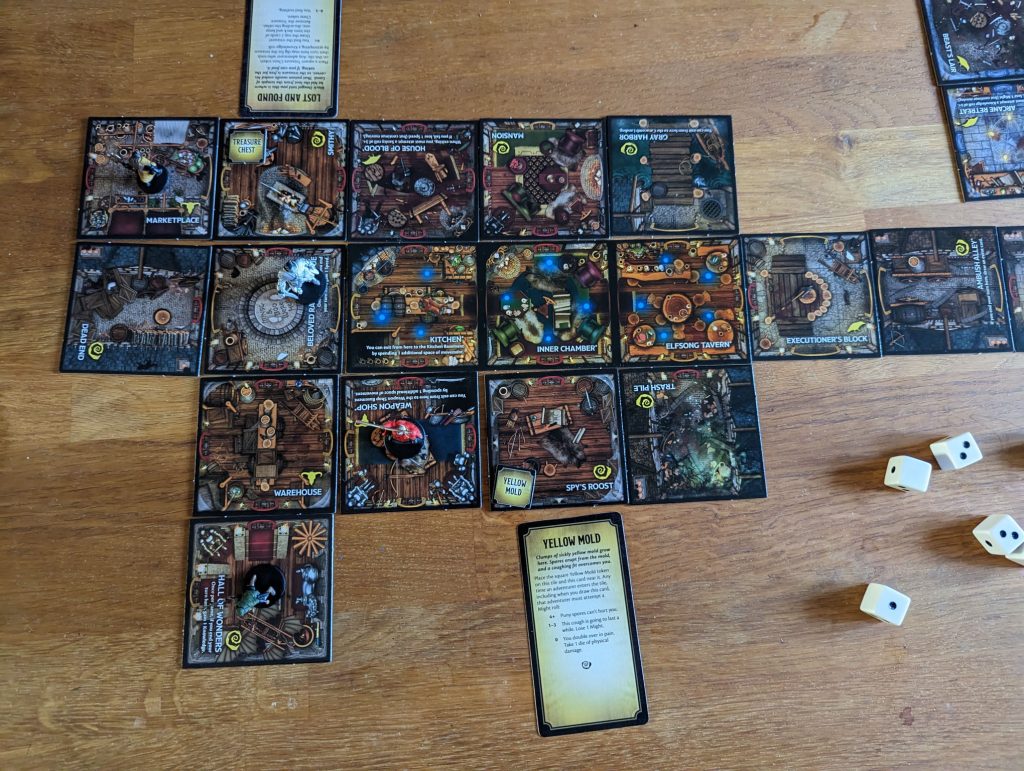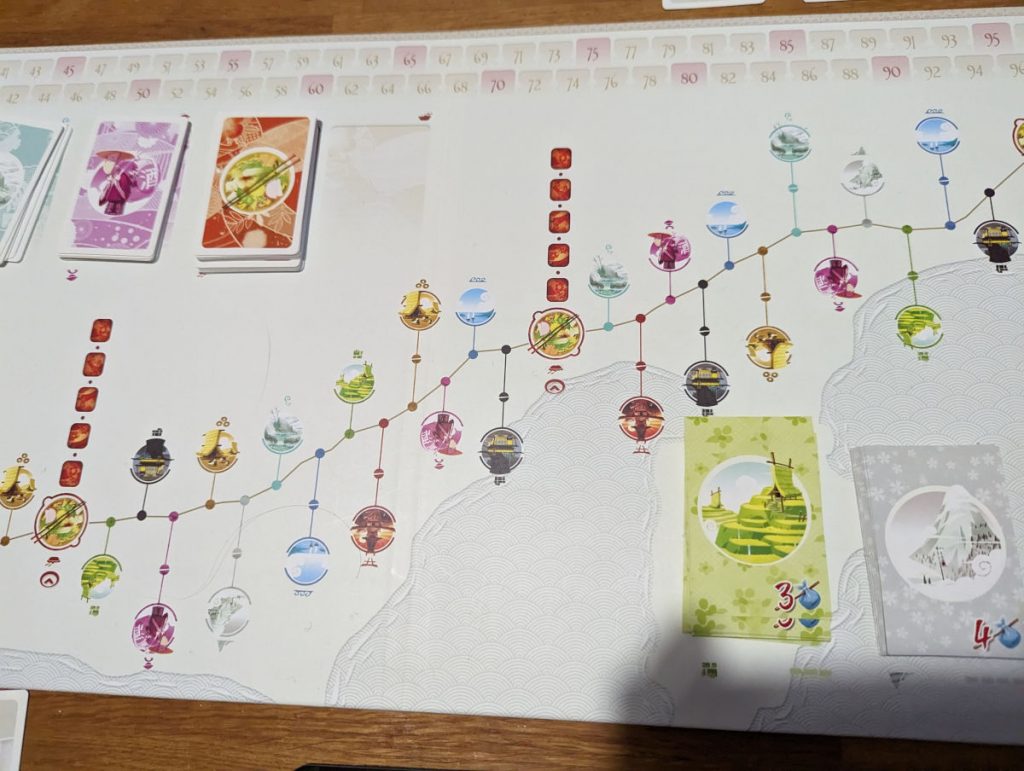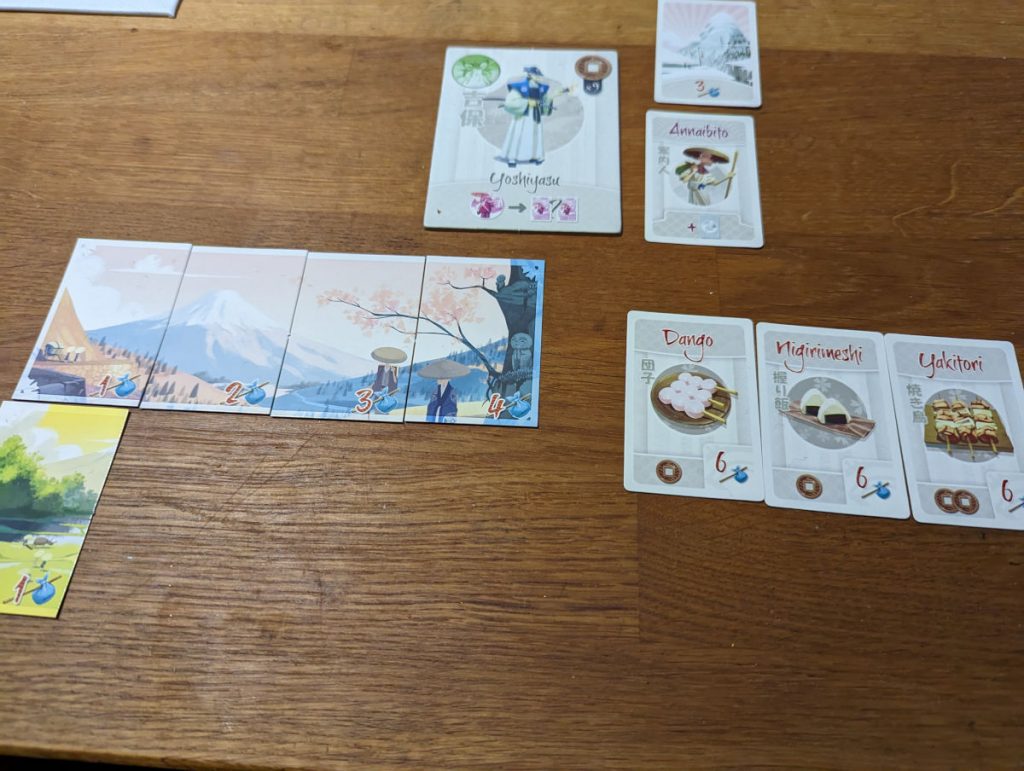Betrayal at Tokaido

We had friends over for food and boardgames before the end of the year, and managed to get in a couple of games – Betrayal at Baldur’s Gate and Tokaido.
The first we’ve played a few times before, and it’s very similar to Betrayal at House on the Hill. By very similar to, I mean pretty much the same game but with a Forgotten Realms skin.
In Betrayal at Baldur’s Gate Every player has a character who has four traits – might, speed, knowledge and sanity. Speed is how many tiles you can move in a turn, might is your physical fighting ability, knowledge and sanity are your mental abilities. Each character has a single special ability – my Half-Orc Paladin (this game doesn’t try to stereotype) could ignore events when moving onto a tile.
A few starting tiles are placed down when the game begins, and we all started in the Elfsong Tavern. On your go, you can move to a neighbouring tile via a door. If there is no door at that tile, you draw a random tile from a deck and place it down. At the start of the game, all the players are working together to explore the map and defeat any challenges encountered.
Each game ends up with a random map, which is created as you play. Some tiles have special features (such as needing to make a check to cross a flooded chamber, or avoiding a trap), some have icons on them for events, items or omens. Items are just that – an item that the first person in the room can pick up. Items are drawn randomly from the item deck.
Events are random things that can happen, which might require a check. Checks are rolled on one of your attributes. You roll a number of dice equal to your score, where each die can give a result of 0, 1 or 2. Scores can go up or down, which is shown by moving clips on the side of the character card up or down.
Omens are the third type of icon, and the most important. They can provide powerful effects, but each time one is picked up you need to make a Haunt check. Once you have about half a dozen Omens between the party, it becomes pretty likely that the Haunt will occur.
Depending on which Omen was picked, and on which tile it was found, determines what the Haunt is. One of the players turns out to be the enemy and is given a secret mission that they need to complete to win the game. The other players are given their own mission to stop the enemy.
In this case it was the Drow that turned out to be trying to summon some big bad. She had to do it in an old temple. Our method of defeating her was to either kill her, or flood the catacombs and destroy the temple.
As always seems to be the case, the Haunt was quite random, and things turned into quite a clear win for the heroes. Though one of us was killed, we flooded the temple and the Drow’s plans to conquer the world (or whatever they were) came to naught.
It’s a relatively fun game, but not particularly deep. Tactics are light, randomness is high and balance can be all over the place.
Our second game was Tokaido, which was a much more relaxing game of taking a walk along the East Sea Road. Along the way, you can stop for meals, do a bit of painting and pick up souvenirs.
Every player can move along the road as far as they want, but must stop at the next inn and stay there until everyone has caught up. The next person to move is always the person at the back, and since there can only be a limited number of people at each stop (often one, sometimes two) being at the back can reduce your chance of stopping at a place you need to.
Points are based on collecting souvenirs of multiple different types, and how much you donate to temples or spend on food. You also gain points for finishing paintings and taking baths.
Being first to an inn gives you the biggest selection of food. If you don’t have much money, it can be important not to be left with only the expensive dishes as options. You can also eat each dish only once during the game, but this restriction is rarely an issue.
The problem I ran into was that I was always first at the inn, which meant I was last to leave. This greatly reduced my ability to select decent places to stop after leaving, and I ended up being first at the next in. I came last – by quite a considerable margin, so this probably wasn’t a great tactic.
It feels like a simple game, but it took longer to read and explain the rules for this to everyone than it did for Baldur’s Gate, mostly due to trying to understand the scoring mechanism. It’s a relatively relaxing game, but again not particularly deep in strategy and tactics.
So we finished our gaming year with a couple of relatively light board games and some great food. Given that we were all full of beef wellington, ginger cake and custard it was probably good not to try anything too complicated.



